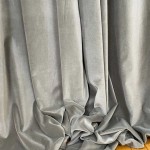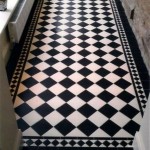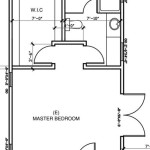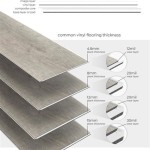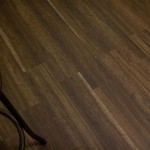Tripod Floor Lamp: A Mid-Century Lighting Icon
The mid-century modern movement, spanning roughly from the mid-1940s to the late 1960s, left an indelible mark on design, architecture, and furniture. Characterized by clean lines, organic shapes, and a focus on functionality, mid-century modern aesthetics continue to resonate with contemporary audiences. Within this broad design philosophy, the tripod floor lamp emerged as a particularly enduring and popular fixture. Its unique combination of form and function has allowed it to transcend trends and remain a sought-after lighting solution in homes and offices around the world.
A tripod floor lamp, as the name suggests, features a base comprised of three legs, typically made of wood or metal. This design provides stability and a distinctive visual aesthetic. These lamps are typically topped with a lampshade, which can vary widely in material, shape, and color, allowing for diverse adaptations to various interior design styles. The height of the lamp also varies, making it a flexible choice for different room sizes and lighting needs. Due to the versatile design of the tripod floor lamp and its integration to varied designs, it can be found to be matched with contemporary and modern design.
The integration of the tripod floor lamp into mid-century modern interiors was a natural fit. The movement emphasized simplicity and the use of natural materials. The three-legged base, often crafted from wood like teak or walnut, aligned perfectly with this emphasis on organic forms and materials. The lampshades themselves often featured simple, geometric shapes, further contributing to the overall minimalist aesthetic. The function of lighting in the mid century design is meant to mimic sunlight and be as natural-feeling as possible, making the lampshade design and material choice crucial to the overall lamp look and function.
Key Point 1: Distinctive Aesthetics and Design Principles
The visual appeal of the mid-century modern tripod floor lamp stems from several key design principles. First, and perhaps most importantly, is the emphasis on clean lines. The legs of the lamp are typically straight or gently tapered, avoiding excessive ornamentation or embellishment. This minimalist approach is a hallmark of mid-century modern design, allowing the form and materials to take center stage.
Second, the use of natural materials is crucial to the aesthetic. Wood, particularly teak, walnut, and maple, were frequently employed for the lamp's legs, adding warmth and a tactile element to the design. Metal, often brushed steel or brass, was also used, providing a contrasting element and a touch of industrial sophistication. The combination of wood and metal is a common feature that also helps to balance the visual weight of the lamp.
Third, the lampshade plays a crucial role in the overall design. Shades are often made of fabric, such as linen or cotton, and feature simple, geometric shapes like cones, drums, or cylinders. These shapes complement the clean lines of the base and provide a soft, diffused light. The color and texture of the shade can also be used to add visual interest and complement the surrounding decor. While the base of the lamp is essential to the stability of the lamp, the lampshade is essential to the overall aesthetic design and the integration of the lamp to the rest of the room's design.
Fourth, the form follows function principle is a key element. The tripod design is not purely aesthetic; it provides a stable and sturdy base for the lamp, ensuring that it stands securely. The height of the lamp is also carefully considered, providing ample illumination without being obtrusive. The functionality aspects of the tripod floor lamp are also critical. The stable base and the ideal position for lighting allow for the lamp to be implemented to serve function besides being a visual element in the design.
Key Point 2: Functionality and Versatility in Interior Design
Beyond its pleasing aesthetics, the mid-century modern tripod floor lamp offers significant functionality and versatility in interior design. Its primary function, of course, is to provide illumination. The placement of the lamp can be tailored to suit various lighting needs, whether providing ambient light for a living room, task lighting for reading, or accent lighting to highlight specific features in a room. The height adjustment also allows the user to customize the illumination depending on use, position, and ambient light.
The portability of a floor lamp is a major advantage. Unlike built-in lighting fixtures, a floor lamp can be easily moved and repositioned as needed. This makes it an ideal choice for renters or those who frequently rearrange their furniture. The lamp can be shifted to different corners or different rooms altogether, without requiring electrical work or structural changes. This makes it a versatile solution for changing lighting needs.
Tripod floor lamps also offer a significant benefit in terms of space utilization. They occupy a relatively small footprint, making them suitable for smaller rooms or apartments where space is at a premium. The slender legs and minimalist design prevent the lamp from feeling bulky or overwhelming, contributing to a sense of openness and airiness. The design of the tripod floor lamp base also allows it to be positioned near walls or tucked into corners.
The range of styles and designs available within the mid-century modern tripod floor lamp category is extensive. From minimalist designs with simple wooden legs and fabric shades to more elaborate models with metal accents and adjustable arms, there is a tripod floor lamp to suit virtually any interior design style. This versatility allows the lamp to be seamlessly integrated into a variety of settings, from modern apartments to vintage-inspired homes. The adaptable design of the tripod floor lamp has allowed it to be seamlessly integrated with contemporary designs.
Key Point 3: Evolution and Contemporary Interpretations
While the mid-century modern tripod floor lamp originated in the mid-20th century, its design has continued to evolve and adapt to contemporary tastes. Modern interpretations of the classic design often incorporate new materials, such as acrylic, resin, or LED lighting technology. These advancements allow for greater energy efficiency and design flexibility, while still maintaining the core aesthetic principles of the original design.
Contemporary designers have also experimented with different shapes and sizes of lampshades. While traditional cone and drum shades remain popular, modern tripod floor lamps may feature more unconventional shapes, such as globes, rectangles, or even sculptural forms. These variations add a touch of personality and individuality to the lamp, making it a statement piece in any room. Depending on the overall design goal, and specific characteristics of the room, the lampshade can be designed to serve as a focal point to gain attention.
Another trend in contemporary tripod floor lamp design is the incorporation of smart technology. Some models feature built-in dimmers, color-changing LEDs, or even voice-controlled functionality. These features allow users to customize their lighting experience and integrate the lamp seamlessly into their smart home systems. These integrations and technology improve the user quality of life and allows them to be incorporated in new and updated home design trends.
Despite these modern adaptations, the core design principles of the mid-century modern tripod floor lamp remain largely unchanged. The emphasis on clean lines, natural materials, and functional design continues to resonate with contemporary audiences. This enduring appeal is a testament to the timeless quality of the design and its ability to adapt to changing trends. Though new technologies and designs arise, the core essence of the mid-century modern tripod floor lamp remains a consistent feature in the designs of a variety of homes.
The ongoing popularity of the mid-century modern tripod floor lamp is a testament to its enduring appeal. Its ability to combine form and function, its versatility in interior design, and its adaptability to contemporary tastes have made it a timeless lighting solution that continues to be cherished by designers and homeowners alike. The lamp’s impact on home design remains apparent, and its significance can be seen in contemporary designs due to its continued influence.

Mid Century Tripod Floor Lamp 66

Tripod Wood Floor Lamp With Linen Shade Natural And Cream

Mid Century Tripod Floor Lamp

Walnut Tripod Floor Lamp With Shelf In Brown By World Market

60 25 Allora Mid Century Modern Tripod Floor Lamp With Drum Shade Matte Black Teamson Home Etl Listed Push Button Switch

Unbranded 66 In Black Tripod Floor Lamp For Living Room With Fabric Shade Vintage Standing Lamps E26 Bulb Included Fl B

Floor Lamp Danish Modern Tripod Mahogany Etsy

Viotto Co Mid Century Tripod Floor Lamp

Mid Century Modern Tripod Floor Lamp Mod Geometric Mcm Lighting 8261391220891

Kira Home Sadie 61 Mid Century Tripod Led Floor Lamp 9w Bulb Leather Accent Legs Black Drum Shade
